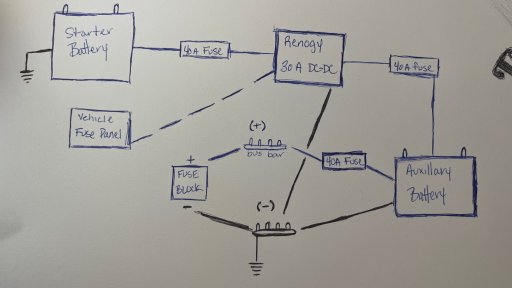
Enthusiast II
- 603
- First Name
- Hannah
- Last Name
- Adventurer
- Member #
-
46225
Hey All!
I am new to the app and am looking for some guidance. I am getting ready to go with an auxiliary battery system to power my fridge, lights, etc. I also have set up my jeep wrangler so my family sleeps in it. With that in mind I went to a shop about getting some assistance with the build (originally thinking LiFePO4) and the techs recommended a dual AGM set up for safety since we sleep in the jeep. So, is the LiFePO with a management system like RedArc not safe? Would AGM be the best option? Thoughts?
I am new to the app and am looking for some guidance. I am getting ready to go with an auxiliary battery system to power my fridge, lights, etc. I also have set up my jeep wrangler so my family sleeps in it. With that in mind I went to a shop about getting some assistance with the build (originally thinking LiFePO4) and the techs recommended a dual AGM set up for safety since we sleep in the jeep. So, is the LiFePO with a management system like RedArc not safe? Would AGM be the best option? Thoughts?






